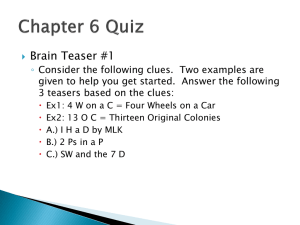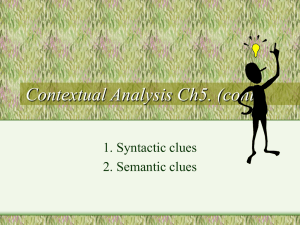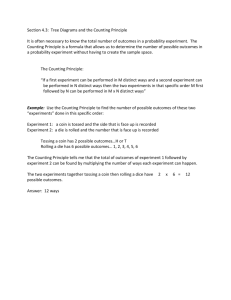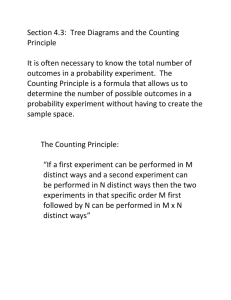5 Minute Mental Math
advertisement
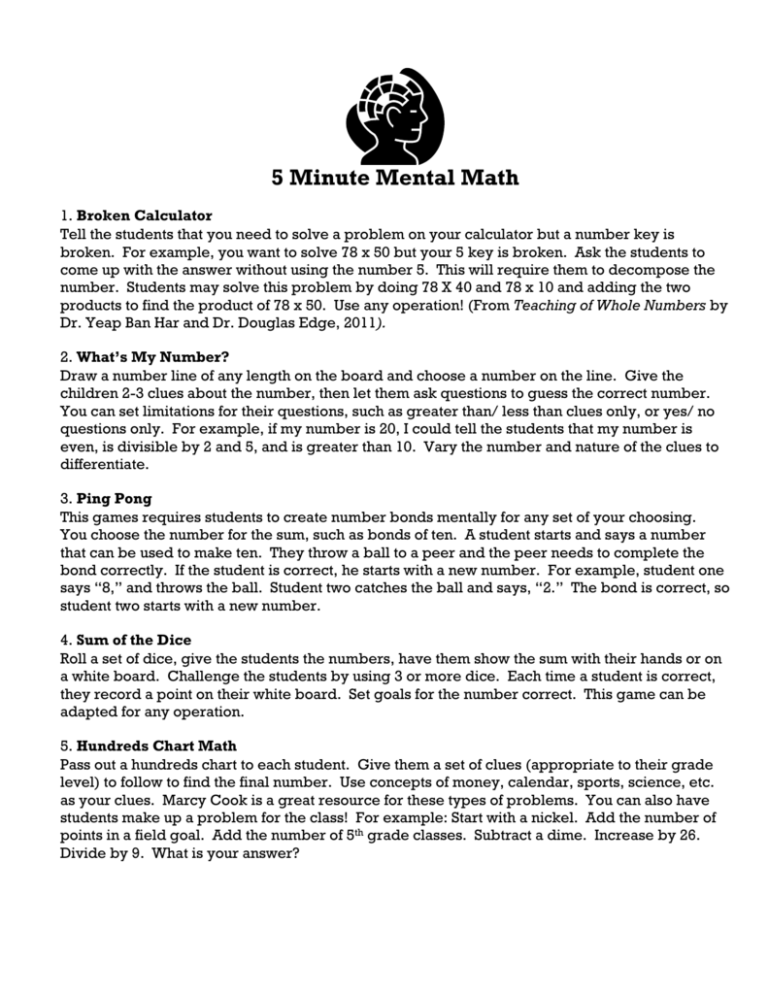
5 Minute Mental Math
1. Broken Calculator
Tell the students that you need to solve a problem on your calculator but a number key is
broken. For example, you want to solve 78 x 50 but your 5 key is broken. Ask the students to
come up with the answer without using the number 5. This will require them to decompose the
number. Students may solve this problem by doing 78 X 40 and 78 x 10 and adding the two
products to find the product of 78 x 50. Use any operation! (From Teaching of Whole Numbers by
Dr. Yeap Ban Har and Dr. Douglas Edge, 2011).
2. What’s My Number?
Draw a number line of any length on the board and choose a number on the line. Give the
children 2-3 clues about the number, then let them ask questions to guess the correct number.
You can set limitations for their questions, such as greater than/ less than clues only, or yes/ no
questions only. For example, if my number is 20, I could tell the students that my number is
even, is divisible by 2 and 5, and is greater than 10. Vary the number and nature of the clues to
differentiate.
3. Ping Pong
This games requires students to create number bonds mentally for any set of your choosing.
You choose the number for the sum, such as bonds of ten. A student starts and says a number
that can be used to make ten. They throw a ball to a peer and the peer needs to complete the
bond correctly. If the student is correct, he starts with a new number. For example, student one
says “8,” and throws the ball. Student two catches the ball and says, “2.” The bond is correct, so
student two starts with a new number.
4. Sum of the Dice
Roll a set of dice, give the students the numbers, have them show the sum with their hands or on
a white board. Challenge the students by using 3 or more dice. Each time a student is correct,
they record a point on their white board. Set goals for the number correct. This game can be
adapted for any operation.
5. Hundreds Chart Math
Pass out a hundreds chart to each student. Give them a set of clues (appropriate to their grade
level) to follow to find the final number. Use concepts of money, calendar, sports, science, etc.
as your clues. Marcy Cook is a great resource for these types of problems. You can also have
students make up a problem for the class! For example: Start with a nickel. Add the number of
points in a field goal. Add the number of 5th grade classes. Subtract a dime. Increase by 26.
Divide by 9. What is your answer?
6. Clock Counts
This activity follows the same idea as Hundreds
Chart Math. Have students draw a number line in
their math journal or on a white board to track
elapsed time through your clues. Give the
students a starting time. Give them clues to travel
through time, such as: Start at 4:30. Go forward 2 hours, go back 10 minutes, go forward half an
hour. What time is it? Model how to create benchmarks and track the time on the number line
and then release students to try this on their own.
7. Skip Counting Dance
Make up motions with your class to indicate “Keep counting on,” “Get ready to change,” and
“Count backwards.” Then start skip counting as a class/ small group. Each time you make the
“Keep counting on” motion, the kids keep going. When you make the “Get ready to change”
motion, the students know that you are going to have them change the direction of their
counting. Have the students move in different directions throughout a set of multiples, such as
“0, 3, 6, 9, 12, 15, 18, 21(Get ready to change), 24, 21, 18, 15, 12, 9, 6, 3, 0.” (From Char Forsten).
8. Square Sums
Draw a 3 x 3 array of squares on the board, without the center square. Write the
numbers 1-9 on the board. Tell the students that they need to fill the boxes with
the numbers in order to have the sum of the boxes along each side be the same.
There are many different possible sums and combinations. One example is
shown to the left. (From Every Child Can Do Math by Dr. Yeap Ban Har and
Lorraine Walker, 2012).
9. Crazy Arrays
Draw a set of dots on your white board. The quantity should be a composite number (unless you
would like to teach you students about prime numbers!) Tell the students to create as many
different rectangular arrays as possible with the dots. For example, if you drew 24 dots on the
board, the students could create arrays of 1 x 24, 2 x 12, 3 x 8, and 4 x 6. This is a great strategy
to build the concept of factors, fact families, multiplication, and division, without explicitly
teaching the concepts. For students who struggle with the pictorial representation, let them
create their arrays with post- it notes.
10. Superman
Give students a set of five numbers. They need to use this set of numbers and any operation to
arrive at a final answer of one. For example, you may give the students the set {3, 1, 6, 2, 7} and
it could be solved using the following steps:
3 + 7 = 10
10 ÷ 2 = 5
5+1=6
6÷6=1
You could also look at the solution as: 3 + 7 = 10 ÷ 2 = 5 + 1 = 6 ÷ 6 = 1. However, using this
setup could create some misconceptions with order of operations, so take care to point out that
you are not following the correct order of operations in that number sentence.




